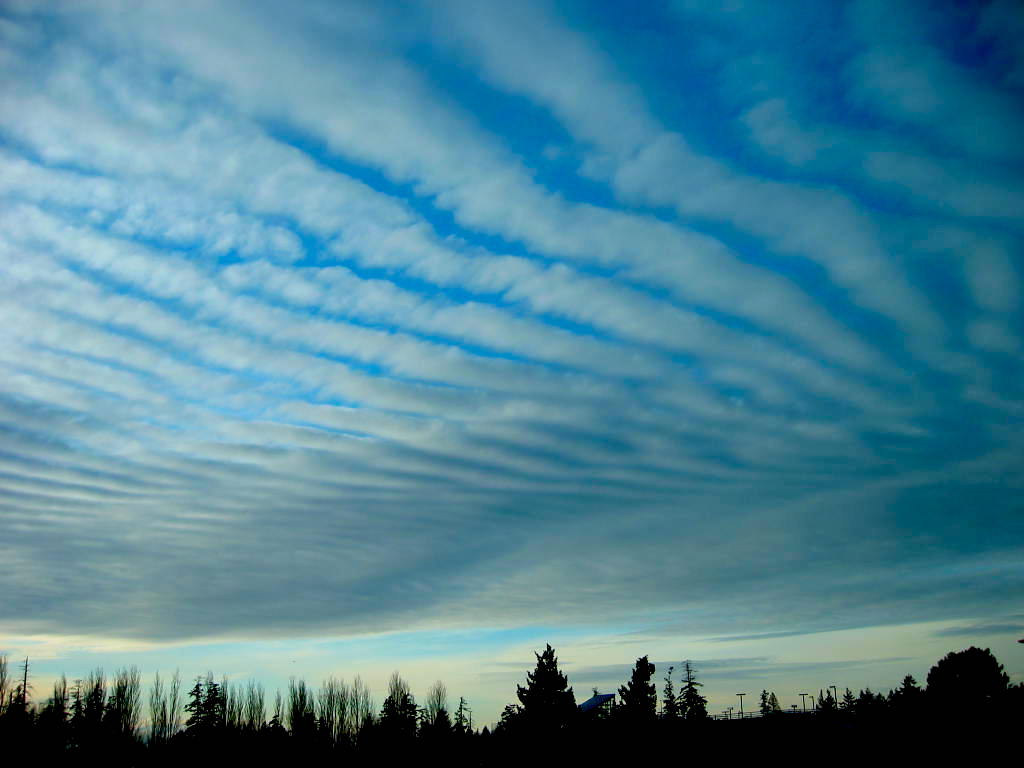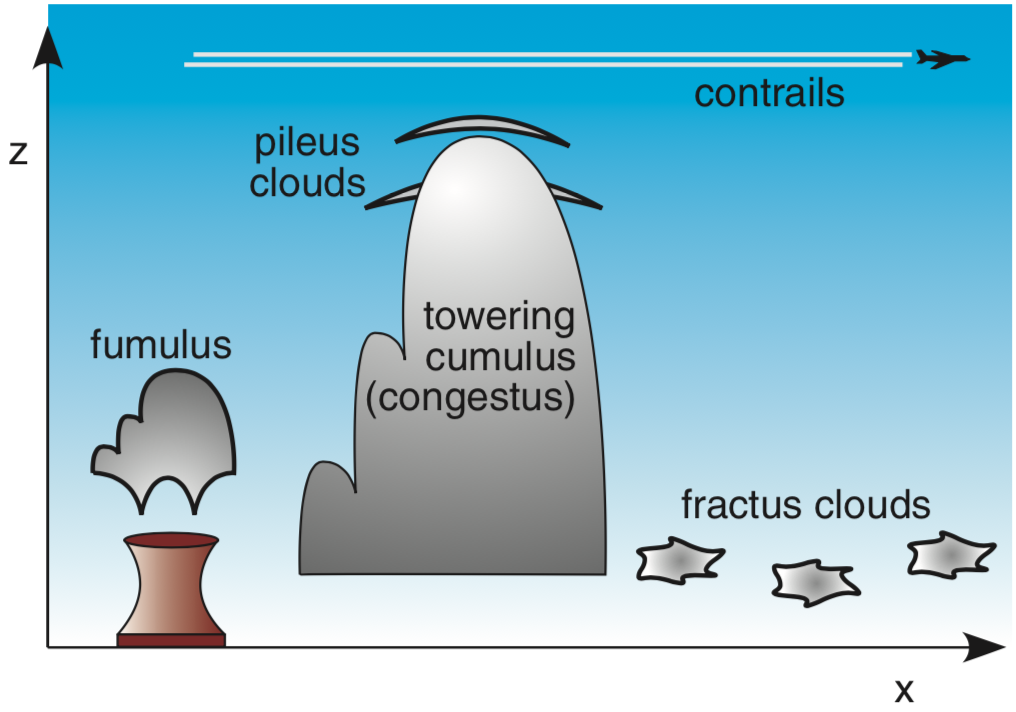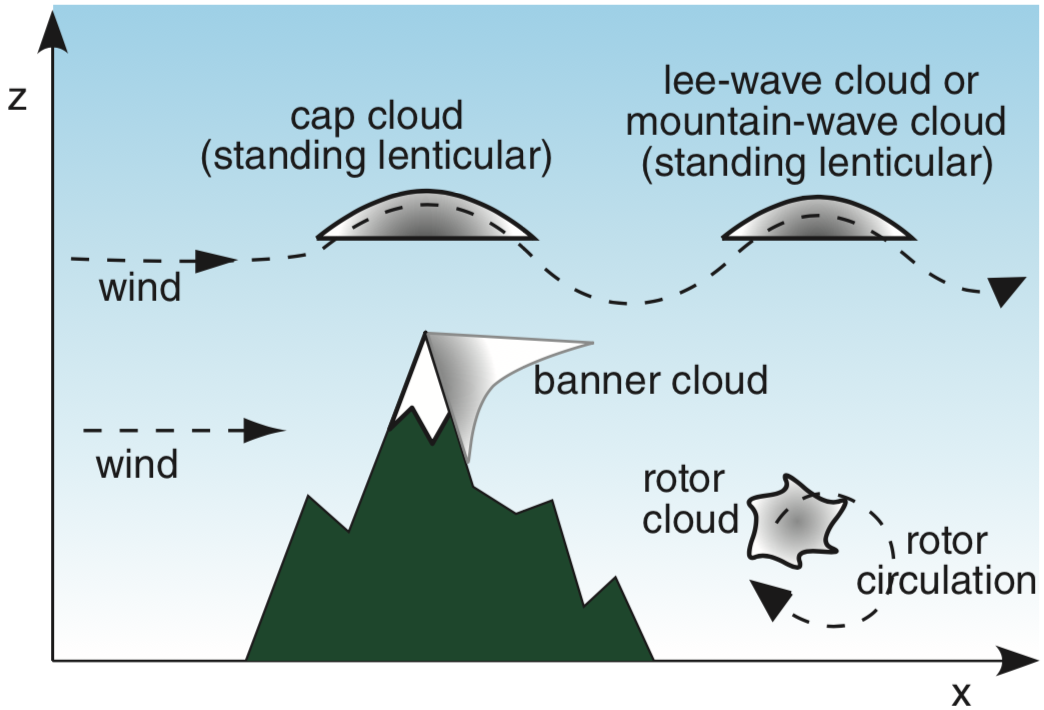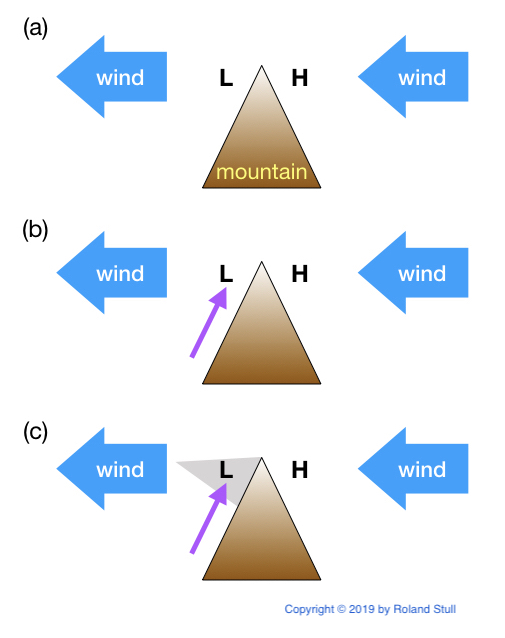ATSC 113 Weather for Sailing, Flying & Snow Sports
Special Clouds
Learning Goal 1b. Recognize and explain special clouds (e.g. castellanus, billow, lenticular, rotor, banner, fractus, etc.)
We can divide clouds into "normal" clouds and "special" clouds. We explore special clouds here, but only the special clouds NOT associated with thunderstorms. Normal clouds are covered in Learning Goal 1a.
One way to organize these clouds is by how or where they form. Click on the links below to learn more about and see photos of some of these clouds:
- Clouds in unstable air aloft
- castellanus — Look like small
castle turrets. Are a clue that the atmosphere is becoming unstable;
thunderstorms possible later in the day. Bumpy if you are flying in that cloud layer, but smooth air above and below it.
- billow (K-H wave) clouds — Indicate wind shear
(change of wind speed or direction) and clear-air turbulence
(CAT)
(moderate to strong bumps) at aircraft altitudes (see Learning Goal 3e
for more info on CAT). Smoother air is often above and below the
layer of billow clouds.
- Clouds associated with strong winds across mountains
- lenticular (mountain-wave) clouds — Indicate vertical wind oscillations and possible mountain-wave turbulence. Sailplanes like the updraft portion of the waves, because they can "surf" the wave and fly very long horizontal distances. Commercial aircraft hate the waves because they often mean a very bumpy ride at all altitudes for the whole time while flying over the mountains.
- rotor clouds — Indicate severe or extreme turbulence at low altitudes due to mountain waves. The rotors can break off aircraft wings and cause pilots to lose control of their aircraft during take-off and landing. Can also affect sailors if the rotors occur over water (lakes or coastal regions) downwind of mountains.
- banner clouds — (Click here for another photo.) Form on downwind side of mountain peak. Indicate strong turbulence touching the downwind side of a tall, isolated mountain peak.
- Clouds formed by extra heat, updrafts, or turbulence:
- pyrocumulus (cumulus flammagenitus) — Form over forest fires and volcanoes. Indicate a forest fire so strong that the heat and moisture released can make a thunderstorm in the smoke.
- pileus — Form over fast-growing cumulus clouds. Interesting to watch, but they are harmless, and don't affect flying, sailing or snow sports.
- fractus / scud
— Form in turbulent humid air near the ground. These scud clouds
indicate high humidity (such as due to drizzle falling from higher
clouds) and strong winds at low altitude.
- Clouds formed by humans (i.e., homogenitus):
- fumulus (cumulus homogenitus) — Water-droplet clouds over cooling towers. Interesting to see, though harmless for flying, sailing, or snow sports.
- contrails (cirrus homogenitus) — Aircraft condensation trail. Indicate the turbulent wing-tip vortices behind aircraft. Small aircraft can be flipped upside down if they accidently fly into a wing-tip vortex. Military pilots hate contrails, because they reveal the aircraft to the enemy.

Billow clouds caused by Kelvin-Helmhotz (KH) waves.
Clouds associated with mountains.
Banner cloud formation. (a) Large-scale winds (blue) blow across a mountain peak (brown), causing high pressure (H) on the upwind side and low pressure (L) on the downwind side. (b) The low pressure sucks lower altitude air (purple) up the mountain slope. (c) But as air rises it cools, allowing water vapour to condense into droplets that we see as a banner cloud (grey).

Miscellaneous clouds.
For more photos of special clouds, do a web search for images of clouds.
Key words: banner clouds, billow clouds,
castellanus, contrail, fractus (scud), fumulus, lenticular
(mountain-wave) clouds, pileus, pyrocumulus, rotor clouds, wind shear,
clear air turbulence (CAT)
Extra info for experts; Not Needed for this Course.
Use this expert_resources link to find all the items listed below:
- Item - Topic
- World.A.1. - World Meteorological Organization (WMO) "International Cloud Atlas"
- USA.B.1. - Wikipedia list of cloud types
- World.A.2. - WMO: Manual on Cloud Observations (an old, outdated document)
- USA.A.1. - American Meteorological Society (AMS): Glossary of Meteorology
- USA.C.1. - Practical Meteorology (PrMet): Chapter 6, Clouds
Image credits. All figures by Roland Stull.

